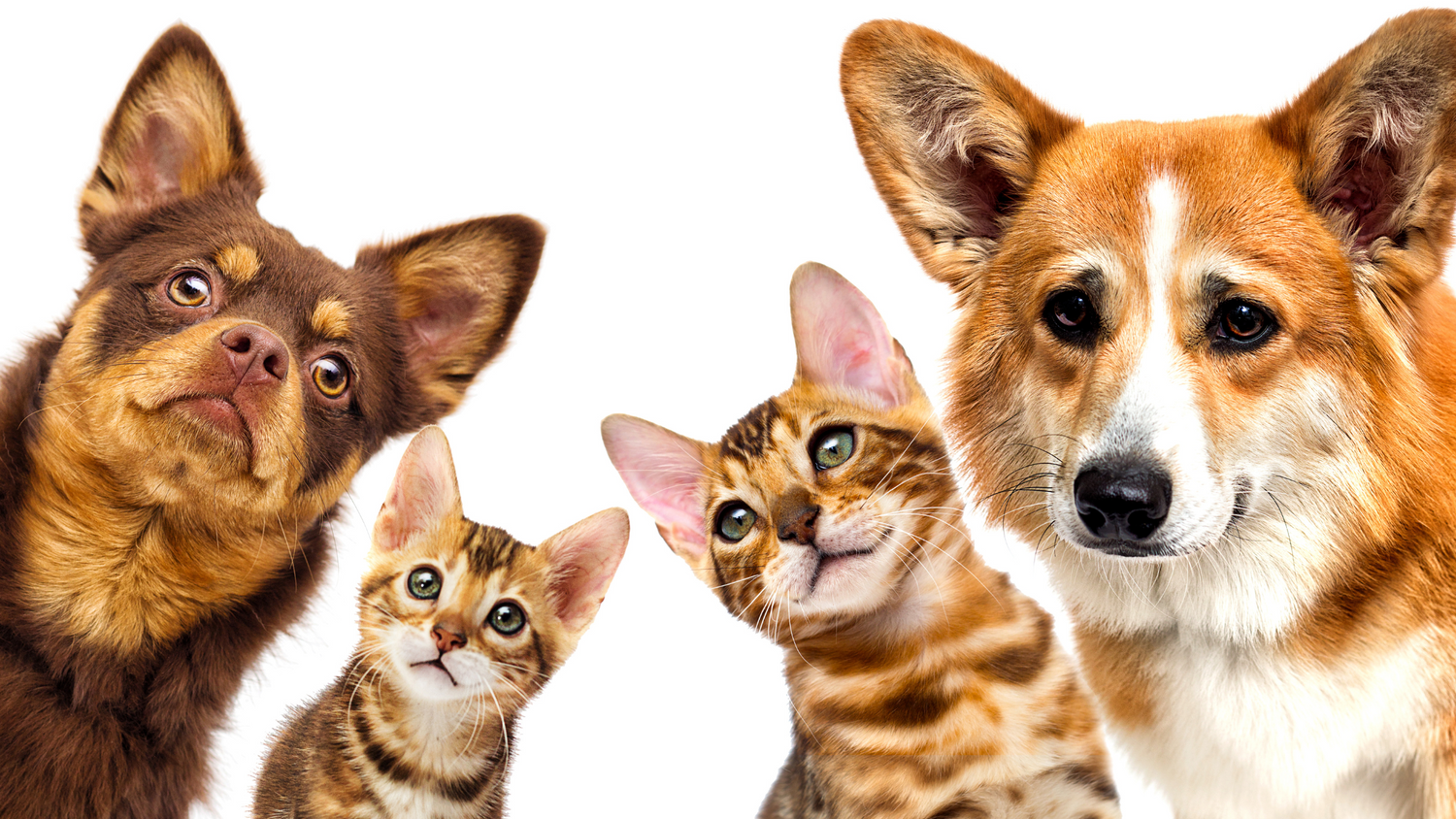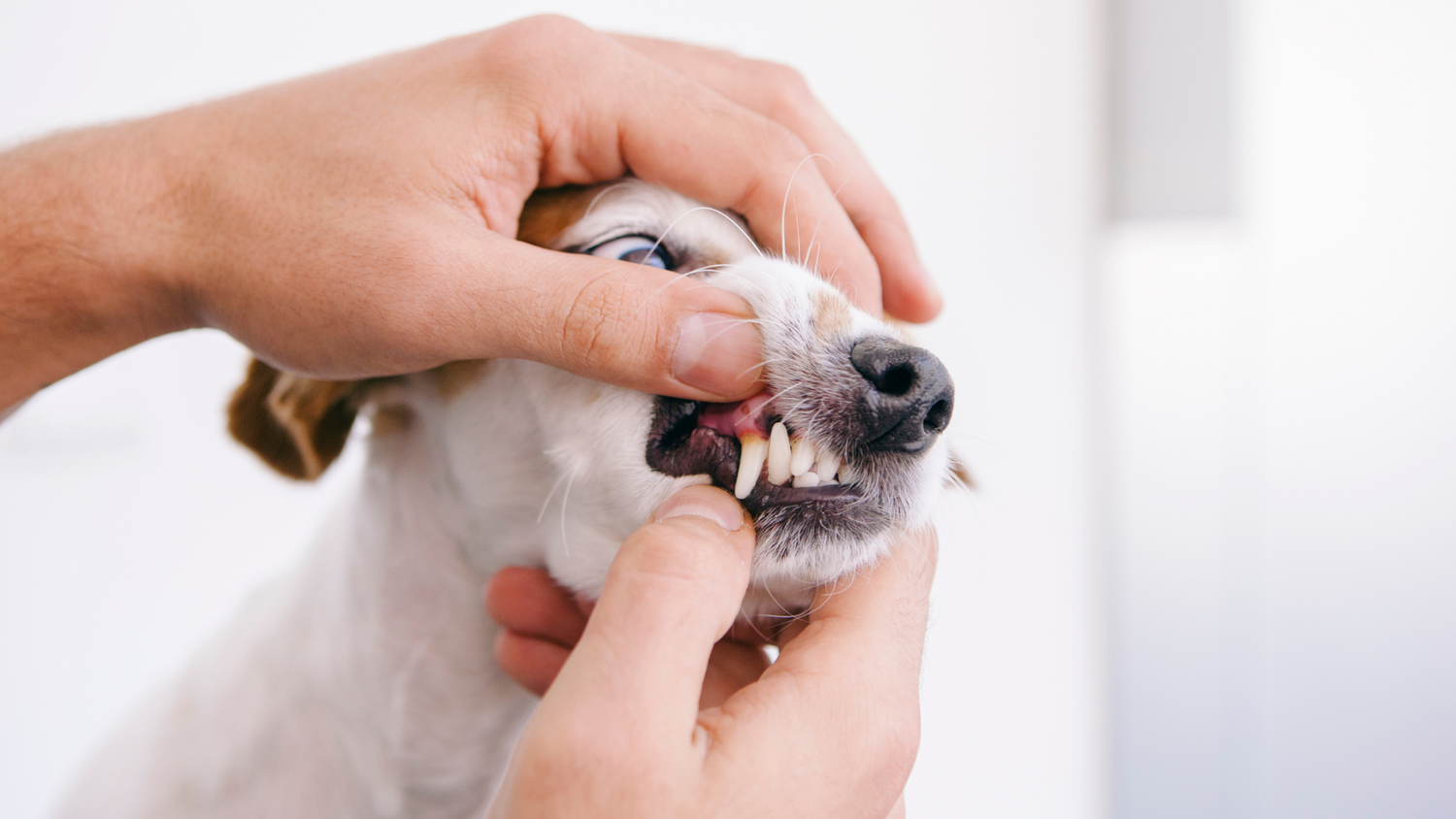Do you have difficulty feeling your dog’s ribs?
Do they have little to no “waist”?
Has your fur baby been reluctant to exercise?
Are you guilty of feeding your dog table scraps or leftovers?
So your pet is a little on the pudgy side… you’re not alone! Published national surveys have reported that 41% of dogs and 32% of cats in Australia are either overweight or obese. Especially during this unusual time of COVID-19, it’s no surprise many pets (and hoomans too!) have experienced weight gain as their routine changes. But don't worry, there are things you can do for your furry pal to reverse the scale and help them feel better.
Is my dog obese?
While obesity can occur in dogs of all ages, the condition is most common in middle-aged dogs (5-10 years old). Neutered and indoor dogs also tend to have a higher risk of becoming obese.
Signs of dog obesity
- Obvious visual signs: this doesn’t just mean the stomach - look for fat deposits over the spine and at the base of your pet’s tail, as well as around their neck and limbs.
- Lack of grooming: a dirty, messy coat can be a warning sign that your dog has gained too much weight to be able to properly groom themselves
- Less mobility: mobility problems, such as trouble standing or sitting down, are often a subtle sign of obesity. When your dog gains weight, they are putting more pressure on their joints. This can cause arthritis and they will often have difficulty standing.
- Difficulty breathing: if your dog is constantly panting, or breathing heavily after the simplest activities, this is a concerning sign of obesity.
- The scales don’t lie: you’ll be able to tell whether they are at a healthy weight by weighing your pet at home or the vet.
What causes dog obesity?
- Environment - overfeeding, lack of exercise and an owner’s inability to recognise obesity as being present all can contribute to obesity in dogs.
- Physiology - once a dog is over five years of age, they usually decrease voluntary activity and burn fewer calories daily. Also, some breeds of dogs are predisposed to obesity. This includes terrier breeds, dachshunds, beagles and labrador retrievers.
- Surgery - neutering/spaying decreases the production of sex hormones, which can cause changed in satiety (increased hunger).
- Medications - certain medications, such as anticonvulsants, can decrease satiety leading to overeating.
- Diseases - several diseases, including hypothyroidism, insulinoma, and hyperadrenocorticism, can contribute to weight gain.
Reasons for overeating
- Owner feeding behavior - this is an issue in many households! We’re all guilty of slipping scraps under the table and giving our dogs a few too many treats. This becomes a bigger issue when more than one family member feeds table scraps and treats to the pet, so no-one takes charge of just how much food the pet consumes in a day.
- Boredom and emotional stress - recent studies suggest pets overeat in response to boredom, anxiety and depression. It is important to find ways to go to your vet to discuss ways to alleviate these issues, such as enriching the pets home environment. Natural therapies can include more exercise, massages, musical therapy and improved diet. New research into food and diet changes has found some interesting ways to naturally reduce anxiety in dogs. If your dog suffers from anxiety, he or she may benefit from introducing omega-3 fatty acids to their diet.

- Competition in multi-pet households - when there is more than one pet in a household, it can be difficult to share food equally when there is a dominant pet that consumes more than their fair share.
- Hormonal influence - Neutered/de-sexed dogs have the tendency to gain weight easily so it’s important for owners to feed the appropriate amount and type of food for your dog.
- Medical conditions - Some medications (e.g glucocorticoids) and medical conditions (e.g. hypothyroid disease) can contribute to excessive energy consumption relative to energy expenditure.
Pet health risks associated with being overweight
There are many health risks associated with an overweight dog. Firstly, several studies have shown excess fat shortens a dog’s life and makes them more likely to develop diseases. Other possible risks for obese dogs include:
- Many types of cancer, diabetes mellitus, heart disease, and hypertension
- osteoarthritis and a faster degeneration of affected joints
- urinary bladder stones
- anesthetic complications as they are less heat tolerant
Carrying extra weight can be particularly difficult on certain breeds, such as dachshunds, because they can develop back problems and have difficult breathing.
What to do if you suspect your dog may be overweight
First thing you should do is visit your vet who can weigh your pet and determine your pet’s Body Condition Score (BCS). Your vet can not only diagnose the cause of your dog’s weight gain, but can also form a safe weight loss plan for your diet. Crash diets are as bad for your dog as they are for you. It’s important to shed the weight gradually and realistically.
Developing A Dog Weight Loss Plan
The two main ways to lose weight are reducing calorie intake and increasing the amount of exercise your dog is getting each day. There are various ways you can get them to be more active. This includes going for daily walks, outdoor games, treadmill training and swimming.
Your veterinarian will assist you in proper portion sizes, feeding times, treat frequency and proper goods. Eliminating table scraps and excessive treats is key! However, that doesn’t mean you have to completely cut out dog treats. Just make sure they are given sparingly and in small quantities.

If your dog has food sensitivities or allergies, we recommend giving them Pet Drs Novel Protein Treats. Novel proteins are ingredients your pet’s body has most likely never been exposed to. This would include kangaroo, wild boar and goat. Because your dog’s body is unfamiliar with these ingredients, they are unlikely to solicit an allergic response. Therefore, including these less mainstream animals into your dog’s diet may help alleviate food allergy symptoms.
Management of Weight - Recovery
Treatment of obesity in dogs is focused on weight loss followed by maintenance of a healthy weight for life. Once your dog has reached a healthy weight (hurray!), you should continue to check their body weight monthly to ensure you’re not going off track.
Maintaining the weight of your dog shouldn’t be difficult if you stick to what you know. Stick to the healthy habits you adopted during their weight loss program: avoiding excessive treats, no scraps, regular exercise, and controlled food portions. Also, be sure to explain to family and friends of these healthy habits to ensure everyone is contributing positively to your dog’s long-term weight management.





